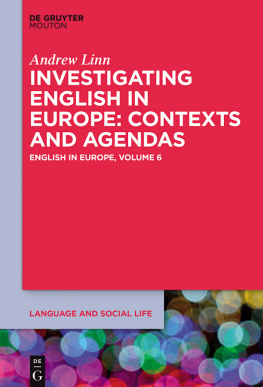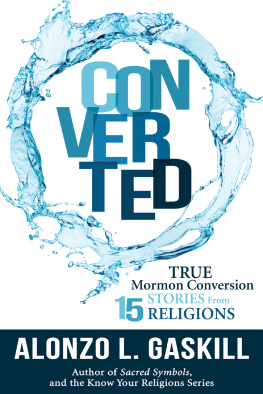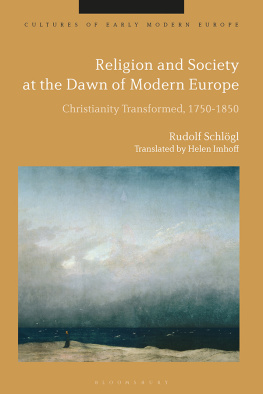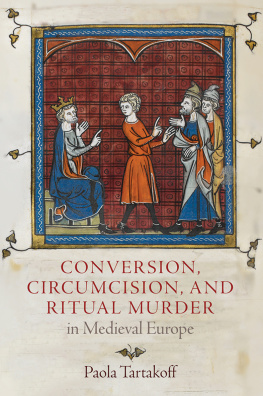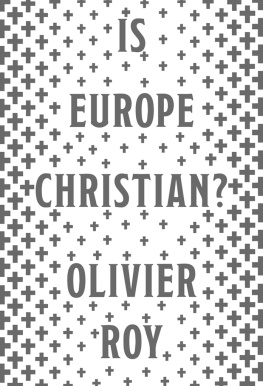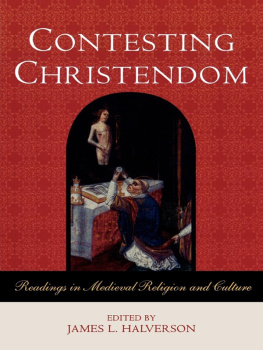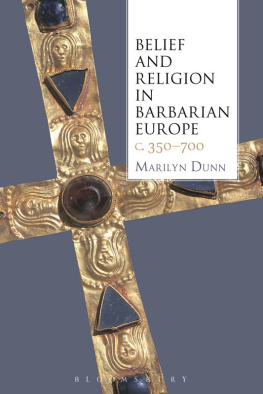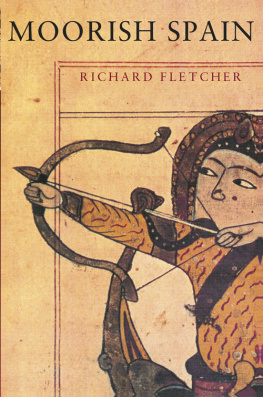Richard A. Fletcher - The Conversion of Europe
Here you can read online Richard A. Fletcher - The Conversion of Europe full text of the book (entire story) in english for free. Download pdf and epub, get meaning, cover and reviews about this ebook. year: 1997, publisher: HarperCollins Publishers Ltd, genre: Religion. Description of the work, (preface) as well as reviews are available. Best literature library LitArk.com created for fans of good reading and offers a wide selection of genres:
Romance novel
Science fiction
Adventure
Detective
Science
History
Home and family
Prose
Art
Politics
Computer
Non-fiction
Religion
Business
Children
Humor
Choose a favorite category and find really read worthwhile books. Enjoy immersion in the world of imagination, feel the emotions of the characters or learn something new for yourself, make an fascinating discovery.

- Book:The Conversion of Europe
- Author:
- Publisher:HarperCollins Publishers Ltd
- Genre:
- Year:1997
- Rating:5 / 5
- Favourites:Add to favourites
- Your mark:
- 100
- 1
- 2
- 3
- 4
- 5
The Conversion of Europe: summary, description and annotation
We offer to read an annotation, description, summary or preface (depends on what the author of the book "The Conversion of Europe" wrote himself). If you haven't found the necessary information about the book — write in the comments, we will try to find it.
The Conversion of Europe — read online for free the complete book (whole text) full work
Below is the text of the book, divided by pages. System saving the place of the last page read, allows you to conveniently read the book "The Conversion of Europe" online for free, without having to search again every time where you left off. Put a bookmark, and you can go to the page where you finished reading at any time.
Font size:
Interval:
Bookmark:
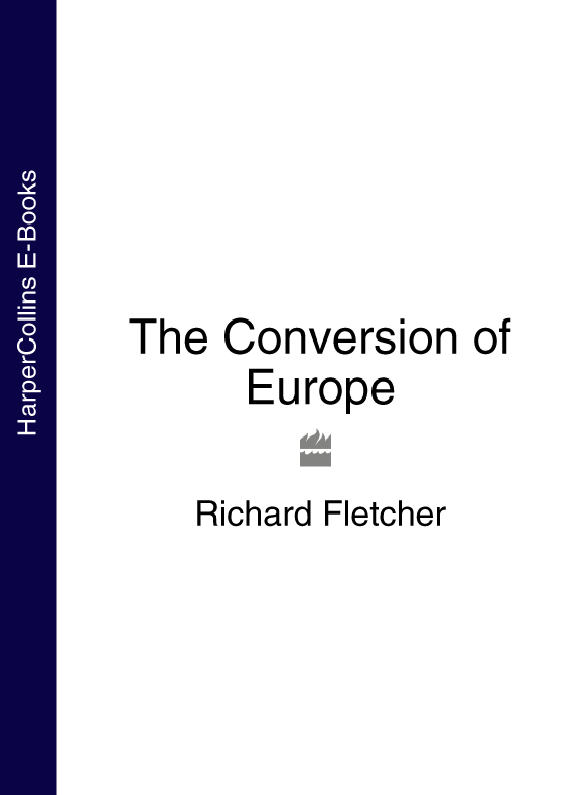
To my Father
and
in memory of my Mother
who nurtured my love of History
and by encouraging regular church-going
made me permanently interested
in how those buildings got there and what they were for.
In memory also of
Nico Colchester
my cousin and beloved friend,
a man of rare quality and manifold talents
whose life was tragically cut short
in 1996 at the age of only forty-nine
with whom I often discussed this book
in remote places far from libraries
in Devon and the Cvennes.
History, I think, is probably a bit like a pebbly beach, a complicated mass, secretively three-dimensional. Its very hard to chart what lies up against what, and why, and how deep. What does tend to get charted is what looks manageable, most recognisable (and usually linear) like the wriggly row of flotsam and jetsam, and stubborn tar deposits.
RICHARD WENTWORTH
Enormous simplifications were possibly necessary to carry a deeper truth than lay on the surface of a mass of unsorted detail. That was, after all, what happened when history was written; many, if not most, of the true facts discarded.
ANTHONY POWELL
Seldom, very seldom, does complete truth belong to any human disclosure.
JANE AUSTEN
1 The Mediterranean world in late antiquity
2 To illustrate the activities of Martin, Emilian and Samson, from the fourth to the sixth centuries
3 To illustrate the activities of Ulfila during the fourth century
4 To illustrate the activities of Ninian and Patrick in the fifth century
5 Gaul and Spain in the age of Amandus and Fructuosus, seventh century
6 The British Isles in the age of Wilfrid and Bede c. 700
7 The Frankish drive to the east in the eighth century
8 The world of Cyril and Methodius in the ninth century
9 Christianity in the Viking world, c. 1000
10 Eastern Europe and the Baltic, twelfth to fourteenth centuries
This book is an investigation of the process by which large parts of Europe accepted the Christian faith between the fourth and the fourteenth centuries and of some of the cultural consequences that flowed therefrom. It is therefore unfashionably ambitious in its scope. Professional historians today are expected to know more and more about less and less, and to communicate their findings to other professional historians in those weird gatherings known as academic conferences. In consequence fewer and fewer people are going to listen to what they have to say. It is a wholly deplorable state of affairs when specialists in any discipline talk only to each other, and accordingly I have sought to write a book which will communicate some of the fruits of research in a manner which will make them accessible to all. Whether or not I have succeeded in this aim will be for others to judge. The last attempt at such a survey by an English author was a work called The Conversion of Europe by the Reverend C. H. Robinson, published in 1917. Much has happened in the discipline of medieval history in the eighty years since Canon Robinsons book was published. It is timely to essay a new synthesis.
Very early on in my reflections on this topic I became convinced that it would be imprudent to attempt to explain this process of the acceptance of Christianity. Efforts to do so tend to be superficial and glib. My book proceeds by way of suggestion rather than explicit argument; my preferred method is to dispose the raw building blocks of evidence in such a manner as to move suggestions forward. Implicit argument may, I hope, be detected, to use an architectural analogy, in the disposition of mass and shape. The building is rambling, but I hope it coheres.
There are a few practical points of which the reader needs to be aware. The scope of the book is confined for the most part to western, Latin or Roman Christendom. The history of eastern, Greek or Orthodox Christendom is not my concern, let alone the history of those exotic Christian communities, Ethiopic, Indian and Nestorian, which lay beyond the eastern Mediterranean hinterland. Orthodox Christendom will loom on the horizon from time to time, notably in Chapters 10, 11 and 14, but for most of the time my concern is with Christianity in the west and the north of Europe. An exception to this rule is furnished by Chapter 9, which deals with the rival monotheisms of Judaism and Islam, with particular reference to early medieval Spain, offered as a kind of counterpoint to the main thrust of the book. Wherever possible I have allowed the original sources to speak for themselves by quoting them in the text, sometimes at length. The endnotes supply references to identify quotations, whether from original sources or from modern authorities, and to indicate reliable published translations where they exist. In a work of this character a formal bibliography would be out of place. Instead I have provided each chapter with brief notes on further reading, almost invariably in English, which will enable the enquirer to pursue matters further.
I wrote this book between September 1993 and June 1996, principally in the course of the two academic years 19935. I am grateful to the Research Committee of the History Department at the University of York, and to Alan Forrest, the then Head of the Department, for allowing me to take an accumulated entitlement to leave of absence during the academic year 19934; also to the British Academy for the award of a British Academy/Leverhulme Trust Senior Research Fellowship in the year 19945. It was thus my rare good fortune to be relieved of all academic duties for two singularly happy years during which I was enabled to concentrate single-mindedly upon research and writing. I record here my gratitude to the two institutions concerned for releasing me from employment and thereby making work possible.
In the course of preparing this book I have incurred many debts to colleagues and friends who have been unfailingly generous with books, articles, information, advice and criticism. I register here my grateful thanks to Lesley Abrams, Peter Biller, James Campbell, Eric Christiansen, Roger Collins, Katy Cubitt, James Howard-Johnston, Edward James, Henry Mayr-Harting, Judith McClure, Peter Sawyer and Charles Thomas. To six persons in particular I owe irredeemable debts. First, to Peter Rycraft, il miglior fabbro, under whose always patient if sometimes exacting guidance I first encountered the challenges and opportunities presented by the comparative historical study of Christian missions. Second, to Ian Wood, who with great generosity read the first half of the book in draft and saved me from many errors of fact and interpretation, especially as regards Frankish matters. Third, to Graham Shaw, who selflessly read the entire typescript and made a large number of extremely acute and perceptive suggestions, on matters both structural and detailed, for its improvement in the course of final revision. Fourth, to Stuart Proffitt, whose courtesy, diligence and sensitivity as an editor know no bounds. I should also like to put on record my heartfelt gratitude to Arabella Quin whose taste, enthusiasm and expertise have been a tower of strength to me during the process of seeing this book through the press. Fifth, to my son Humphrey, who repeatedly showed me that rage and despair were inappropriate (as well as ignoble) reactions to the bewilderments of an unfamiliar technology, and that calm, patience and humility were better means to acquire the necessary skills. Sixth and finally, to my wife Rachel: to her my gratitude is beyond words.
Font size:
Interval:
Bookmark:
Similar books «The Conversion of Europe»
Look at similar books to The Conversion of Europe. We have selected literature similar in name and meaning in the hope of providing readers with more options to find new, interesting, not yet read works.
Discussion, reviews of the book The Conversion of Europe and just readers' own opinions. Leave your comments, write what you think about the work, its meaning or the main characters. Specify what exactly you liked and what you didn't like, and why you think so.

